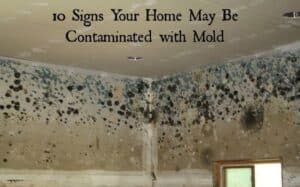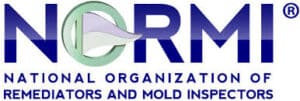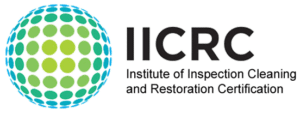10 Signs Your Home May Be Contaminated with Mold

After what we went through a year ago, mold is near the top of my list of things to worry about. Mold can start growing so very easily – depending on the variety, something needs to be wet between 24 and 72 hours before it will start to grow. (That’s because there are mold spores in the air all the time, at low levels, but as soon as they find a source of “food,” they’ll settle and multiply rapidly.)
Mold is also incredibly dangerous. The mainstream view is still, unfortunately, that only a small number of molds are truly a problem, and that the biggest risk is minor to moderate respiratory symptoms. This isn’t true. Any mold is dangerous; some are more dangerous than others. Common household molds include aspergillus, penicillium, and stachybotrys. The last is acknowledged as dangerous (and it is), but the others are as well.
High levels of mold in your home can lead to:- Coughing
- Sneezing
- Sore throat
- Repeated respiratory illnesses
- Newly developed or worsening allergies (food, environmental)
- Compromised immune system
- Headaches
- Fatigue/sleepiness
- Brain fog
- Lack of energy
- Diarrhea
- Vomiting
- Fevers
- Autoimmune disorders
- Dizziness
- Fainting
Mold can and will cause seriously major health problems, if there’s enough of it over a long enough period of time. Our family personally experienced repeated respiratory infections, fevers, vomiting, extreme fatigue and tiredness, brain fog, irritability, and more. Others that we know experienced serious dizziness (incapacitating), developing diabetes and other autoimmune conditions, and more. This is serious stuff.
The mainstream will tell you this is not true and not possible. But it absolutely is. Too many people that I know personally have dealt with these terrible symptoms, and have had their homes professionally tested (we did) and have found that the mold is causing it all. Mold professionals will often tell you it is true also.
Since this is so important to your family’s health, look for these 10 signs that your home has a mold problem.
10 Signs Your Home May Be Contaminated with Mold Not all of these signs are “for sure,” but if you see them — especially several of them — you should suspect a problem. Let’s learn more about them.
1. Odd, musty smell anywhereIf you notice any kind of odd smell, especially a musty one, there is likely a problem. The smell may be like mildew (think of wet clothes that have sat too long), basement-musty (but stronger), and once I had mold that smelled weirdly like a permanent marker. Find the source of any odd smell.
It could be as simple as spoiled food that got tucked behind something or forgotten, or a gym bag of wet clothes left too long — these are obviously easy to fix! But if you notice an entire room has this sort of odd smell, or you smell something odd when you walk into your home, then you need to look for the reason immediately.
2. More frequent sore throats/coughsFeeling sick lately, especially with coughing or sore throats? This can be an important sign if you haven’t been around anyone who is sick and the symptoms don’t seem to be going away.
3. Unusual feelings of tirednessMold can really take a lot out of you, as your body tries to fight it off. You may feel very sleepy and lack energy. You may have trouble getting up in the morning, even possibly feeling like you can’t open your eyes or like your body is very heavy. Unusual changes to your sleep habits and needs are definitely a sign something is wrong — so if it isn’t an environmental issue, you should see a professional for a medical evaluation!
4. Irritability, anxiety or depressionMold can cause or worsen irritability, anxiety, or depression. If you are experiencing new or severe changes in your mood (especially with some of the other signs on this list), you may suspect mold. If mold is not an issue, then you should be evaluated for other medical issues, because sudden and severe changes are not normal and there is help.
5. Moisture, especially over timeIf there’s an area of your home that seems to often be wet — basements and bathrooms especially — that is a major warning sign. As I mentioned above, it doesn’t take long at all for mold to grow. So, if there is ongoing moisture, even for several days in the same area, you should expect mold to start growing.
6. Any black, green, blue, white, yellow mold on any surface, no matter how small Obviously, finding visual evidence of mold is a problem — it’s confirmation there IS mold! Take this seriously no matter what surface it is on.If it is on clothing, paper, carpets, walls, toys, furniture — anything. If it is on a small or moveable object (paper, clothing, toys) and you can identify the source of mold easily, then it may not be an issue. If, however, mold is cropping up on several different surfaces seemingly randomly, there is likely a bigger source somewhere that is releasing large amounts of spores into the air, which is causing this growth.
If you see mold on furniture, under a sink, on a wall, there is a problem. It does not matter how small it looks, or how contained it seems to be. If there is mold on part of the actual structure of your home, there is a source of water that is keeping it wet and allowing the mold growth. It may be quite a bit worse than it appears on the surface, too, as mold can burrow down deep into wood and drywall.
But! Do not try to cut a wall open and rip stuff out yourself to see how bad it is! This will send spores flying into the air and make the problem much worse! (Call a professional immediately.)
7. Visible, recurrent mold/mildew in bathroomsAll bathrooms do have issues with mildew at times, just because they are often wet. Follow proper procedures to prevent this — keep shower curtains open after use to dry instead of folded up, keep shower doors open, keep the door open after you are done to allow moisture in the air to dissipate, wipe down surfaces prone to mildew, spray an essential-oil based mildew cleaner after showers, etc. If your bathroom is often having mold/mildew issues despite proper cleaning, though, you may suspect a bigger problem.
8. Fresh food spoils quicklyHave you noticed that fruit on the counter is suddenly going moldy in a matter of days? That’s not good. Many fresh foods should last between 5 and 10 days on the counter before getting moldy. If you’re seeing spoilage in 1 – 2 days, that is a very bad sign, if it is ongoing. (One or two pieces of produce spoiling quickly means it might just be that item, but a constant issue with different types of food, bought from different places, etc. is a problem.)
9. Clothes in washer get musty-smelling quicklyEveryone knows if you wash a load of laundry and leave it overnight (or for a day or two…) it’ll get musty-smelling. That’s pretty normal. But if you notice this happening after only a few hours, there’s a problem. It shouldn’t get musty so quickly. But, if there are a lot of mold spores floating around, it will.
10. Positive dust spore testIf some of these signs are making you feel uneasy, the best thing to do is a quick test. Most home improvement stores offer them, and you can even buy them online (like here). The idea is that you take a dust sample from somewhere in your home where you suspect there is a problem using a special kit, then mail it off to a lab. They will send you a report on what types of mold are found in your home and what the counts are. Counts of penicillum/aspergillus under 100 are not typically a problem. Any amount of stachybotrys is not good. High counts are big red flag that you need to do further testing and call in professionals. Please note that although these kits are inexpensive, you’ll pay a bit more for the actual lab test. This is still far cheaper than a professional hygienist.
What if I Suspect Mold?If you suspect a real problem, try the dust spore sampling I mention above to get an idea of what’s going on without a major expense. If counts come back high, then you will want to call in a professional hygienist for an inspection and further testing. This professional will look for sources of moisture in your home and spots where there is visible mold, or areas where you suspect an issue. They will normally take air samples with a special machine, and also take a swab or two from any surfaces where there is visible mold. These tests will give you more information about what is going on.
If tests come back high, then you will be facing remediation.If the mold is limited to a specific area of your home, and counts are only high in that area and not throughout your home, then remediation is possible. A professional company will cordone off the area and will use special HEPA air scrubbers to clean the spores out of the air while they work. If, however, mold is being found in several areas of your home, and counts are high on all tests, then I would suggest leaving the home as quickly as possible. Even if remediation were possible, I would not personally trust it.
Under no circumstances should you attempt to clean up mold yourself.Do not cut into walls with visible spores to find the source yourself. Do not rip out carpets, dry wall, etc. that are moldy. Just do not do it. This sends spores flying into the air and they will circulate throughout your home, and the problem will get much worse. We ignored this advice and believe me…we should not have. Learn from our mistakes!
Although dealing with mold issues can be extremely stressful and expensive, and can sometimes mean abandoning your home and all your belongings, it is worth it to reclaim your family’s health. Truly.
Source: Modern Alternative HealthContact Aspen for anything related to water damage cleanup, mold testing, mold removal, or air ducts: Call 978.328.0882 or email [email protected].
Aspen Environmental professionals are licensed and insured and members of the National Organization of Remediators and Mold Inspectors (NORMI), the National Air Duct Cleaners Association (NADCA), and the Institute of Inspection Cleaning and Restoration Certification (IICRC)



